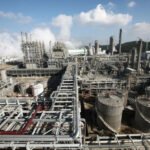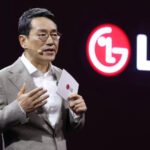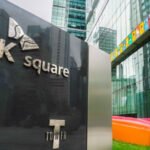Samsung’s NQ8 AI Gen3 processor
South Korean tech giant Samsung Electronics Co. on Friday flagged a more than 15-fold increase in its second-quarter operating profit as the artificial intelligence boom lifted chip prices.
The world’s largest memory chipmaker will likely continue to post handsome earnings and sales growth for the rest of the year on the back of strong demand for AI chips such as high-bandwidth memory (HBM), analysts said.
Samsung said in a regulatory filing that its operating profit in the April -June period is estimated at 10.4 trillion won ($7.5 billion), up 1,452% from 670 billion won in the year-earlier period on a consolidated basis.
(Graphics by Dongbeom Yun)
The preliminary operating profit figures exceed market consensus forecasts of 8.3 trillion won. If figures are confirmed later this month, the second quarter will be the most profitable for Samsung since the third quarter of 2022, when it posted a profit of 10.8 trillion won.
The second-quarter figure surpasses Samsung’s 2023 full-year operating profit of 6.57 trillion won.
Second-quarter sales likely rose 23.3% from the same period a year earlier to 74 trillion won, it said.
Samsung plans to announce detailed quarterly results, including net profit and divisional performance, on July 31.
Following the better-than-expected earnings, Samsung’s shares rose 3% to close at 87,100 won on Friday, outperforming the benchmark Kospi index’s 1.3% rise.
Samsung Electronics’ chip cleanroom
SAMSUNG’S Q2 MEMORY PROFIT SEEN UP TO $5.1 BILLION
Although Samsung didn’t provide a breakdown of its divisional performance, its Device Solutions (DS) division, which oversees its chip business, likely posted a much stronger profit than first-quarter profit, boosted by higher average DRAM and NAND sales prices.
Analysts said they expect Samsung’s chip business to post a second-quarter operating profit of 6.5 trillion-7 trillion won ($4.7 billion-$5.1 billion), compared to the first-quarter profit of 1.9 trillion won.
Analysts said that explosive demand for high-end DRAM chips, including HBM chips used in AI chipsets, and chips used in data center servers and gadgets that run AI services have helped buoy chip prices.
Samsung Electronics outlet at its headquarters in Seoul
According to market tracker TrendForce, DRAM chip prices rose 13%-18% in the second quarter from the first quarter while NAND prices gained 15%-20% on-quarter.
Samsung’s device division, which includes smartphones and laptops, likely posted 2.3 trillion won in operating profit in the seasonally weak second quarter, down from the first-quarter profit of 3.5 trillion won.
Q3 OUTLOOK
Analysts expect a continued tailwind for Samsung in the coming quarters on robust demand for AI chips, the launch of new flagship Galaxy smartphones and the debut of the Galaxy Ring, its health tracker, in the third quarter.
On Thursday, Samsung officially launched dedicated HBM and advanced chip packaging teams as its new semiconductor division leader Jun Young-hyun vowed to overtake crosstown rival SK Hyix Inc., the HBM segment leader.
Samsung headquarters in Seoul
The launch of the two dedicated teams, part of Samsung’s organizational revamp, is its first reshuffle since Vice Chairman Jun took the helm of Samsung’s semiconductor business in May to overcome what it called a “chip crisis.”
Samsung, which vows to triple its HBM output this year, is eager to pass quality testing currently underway by Nvidia Corp., the world’s top AI chip designer.
Analysts expect general-purpose DRAM prices to remain solid in the third quarter as chipmakers are largely using their facilities to produce more profitable HBM chips, resulting in a tight supply of commoditized DRAMs.
By Chae-Yeon Kim and Jeong-Soo Hwang
why29@hankyung.com
In-Soo Nam edited this article.















